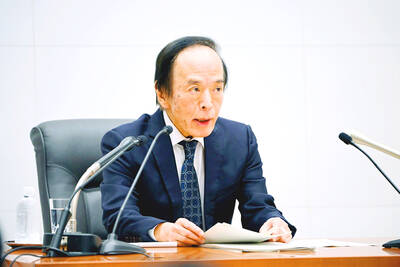The Chung-Hua Institution for Economic Research (CIER, 中華經濟研究院) yesterday cut its GDP growth forecast for the nation this year from the 3.55 percent it forecast in April to 2.36 percent, due to the impact of near-zero growth in the second quarter because of global economic uncertainties.
The Taipei-based think tank’s latest forecast was higher than the 1.94 percent GDP growth estimated by Academia Sinica last week.
“Although economic momentum in the second quarter was weak, our overall economic outlook for this year is not that pessimistic [compared with Academia Sinica’s forecast],” CIER president Wu Chung-shu (吳中書) told a press conference.
Wu said the nation’s exports showed a contraction in the first six months due to the impact of various global economic uncertainties led by the eurozone’s debt crisis, further dragging down the GDP growth rate and the institute’s growth forecast.
However, the nation’s overall economic momentum for this year may not be as slow as during the global financial crisis of 2008 and 2009, Wu added.
The institute forecast GDP to grow just 0.18 percent in the second quarter from a year earlier, worse than the 0.39 percent annual growth posted in the first quarter, an indication that the second quarter could be the bottom of this round of the economic cycle.
However, the economy in the second half of the year may rebound from the first half by rising 3.48 percent and 5.13 percent in the third and fourth quarters respectively, as exports recover from their slump, the institute said in its quarterly report.
The institute expects the annual growth of exports to reach 0.41 percent this year, with imports to slide 0.25 percent from a year earlier.
On the domestic demand front, private consumption is expected to rise 1.91 percent this year, while private investment may fall 2.23 percent, as most companies in Taiwan maintain a relatively conservative attitude on capital expenditure, the report said.
Since various domestic institutes have revised downward their latest forecasts for economic growth this year, it seems increasingly likely that the Directorate-General of Budget, Accounting and Statistics (DGBAS) will follow suit and may cut its full-year growth forecast next Tuesday.
In May, the DGBAS estimated the nation’s economy would grow 3.03 percent this year.

Taiwan Semiconductor Manufacturing Co (TSMC, 台積電) last week recorded an increase in the number of shareholders to the highest in almost eight months, despite its share price falling 3.38 percent from the previous week, Taiwan Stock Exchange data released on Saturday showed. As of Friday, TSMC had 1.88 million shareholders, the most since the week of April 25 and an increase of 31,870 from the previous week, the data showed. The number of shareholders jumped despite a drop of NT$50 (US$1.59), or 3.38 percent, in TSMC’s share price from a week earlier to NT$1,430, as investors took profits from their earlier gains

In a high-security Shenzhen laboratory, Chinese scientists have built what Washington has spent years trying to prevent: a prototype of a machine capable of producing the cutting-edge semiconductor chips that power artificial intelligence (AI), smartphones and weapons central to Western military dominance, Reuters has learned. Completed early this year and undergoing testing, the prototype fills nearly an entire factory floor. It was built by a team of former engineers from Dutch semiconductor giant ASML who reverse-engineered the company’s extreme ultraviolet lithography (EUV) machines, according to two people with knowledge of the project. EUV machines sit at the heart of a technological Cold

TAIWAN VALUE CHAIN: Foxtron is to fully own Luxgen following the transaction and it plans to launch a new electric model, the Foxtron Bria, in Taiwan next year Yulon Motor Co (裕隆汽車) yesterday said that its board of directors approved the disposal of its electric vehicle (EV) unit, Luxgen Motor Co (納智捷汽車), to Foxtron Vehicle Technologies Co (鴻華先進) for NT$787.6 million (US$24.98 million). Foxtron, a half-half joint venture between Yulon affiliate Hua-Chuang Automobile Information Technical Center Co (華創車電) and Hon Hai Precision Industry Co (鴻海精密), expects to wrap up the deal in the first quarter of next year. Foxtron would fully own Luxgen following the transaction, including five car distributing companies, outlets and all employees. The deal is subject to the approval of the Fair Trade Commission, Foxtron said. “Foxtron will be

INFLATION CONSIDERATION: The BOJ governor said that it would ‘keep making appropriate decisions’ and would adjust depending on the economy and prices The Bank of Japan (BOJ) yesterday raised its benchmark interest rate to the highest in 30 years and said more increases are in the pipeline if conditions allow, in a sign of growing conviction that it can attain the stable inflation target it has pursued for more than a decade. Bank of Japan Governor Kazuo Ueda’s policy board increased the rate by 0.2 percentage points to 0.75 percent, in a unanimous decision, the bank said in a statement. The central bank cited the rising likelihood of its economic outlook being realized. The rate change was expected by all 50 economists surveyed by Bloomberg. The